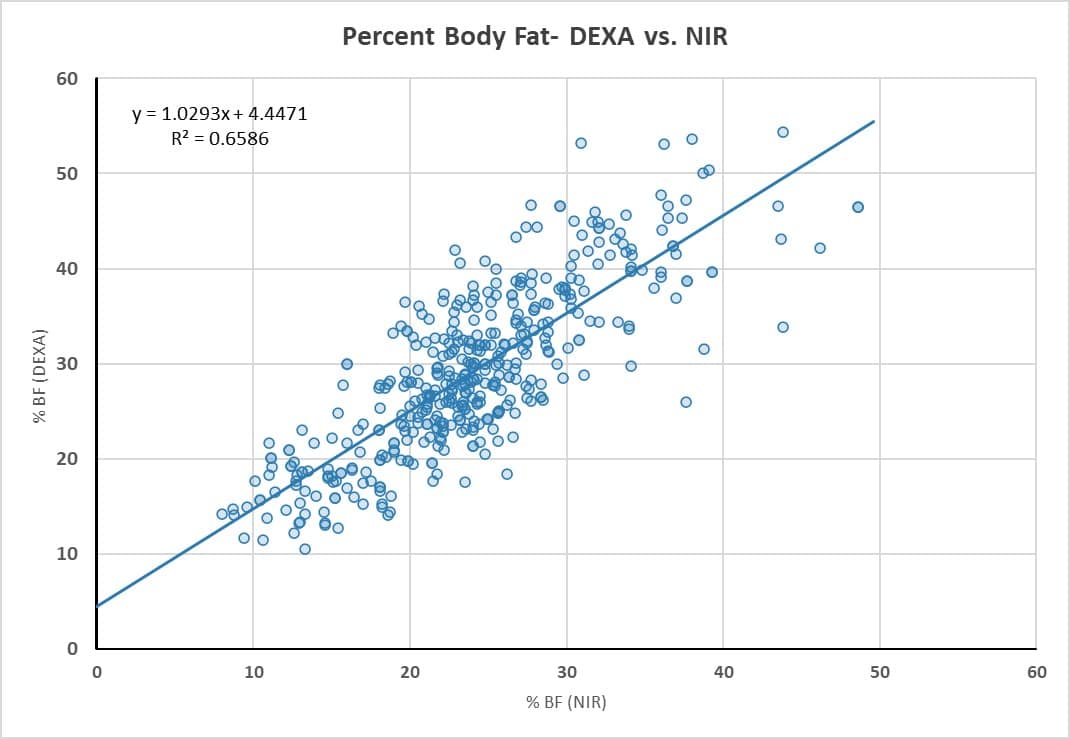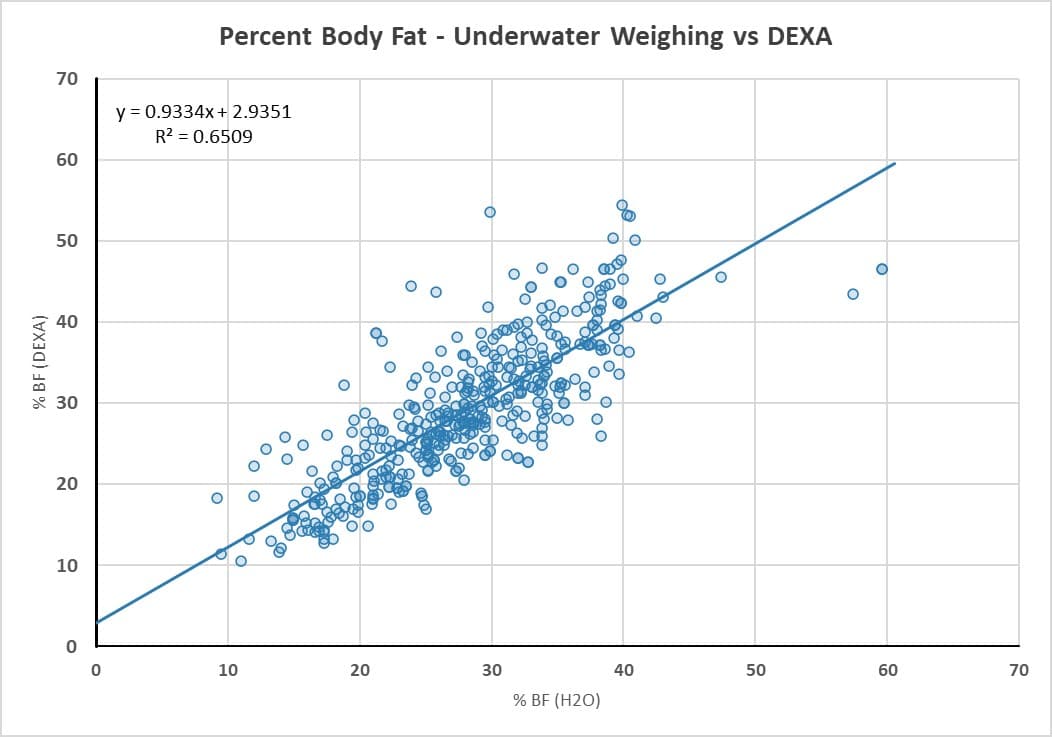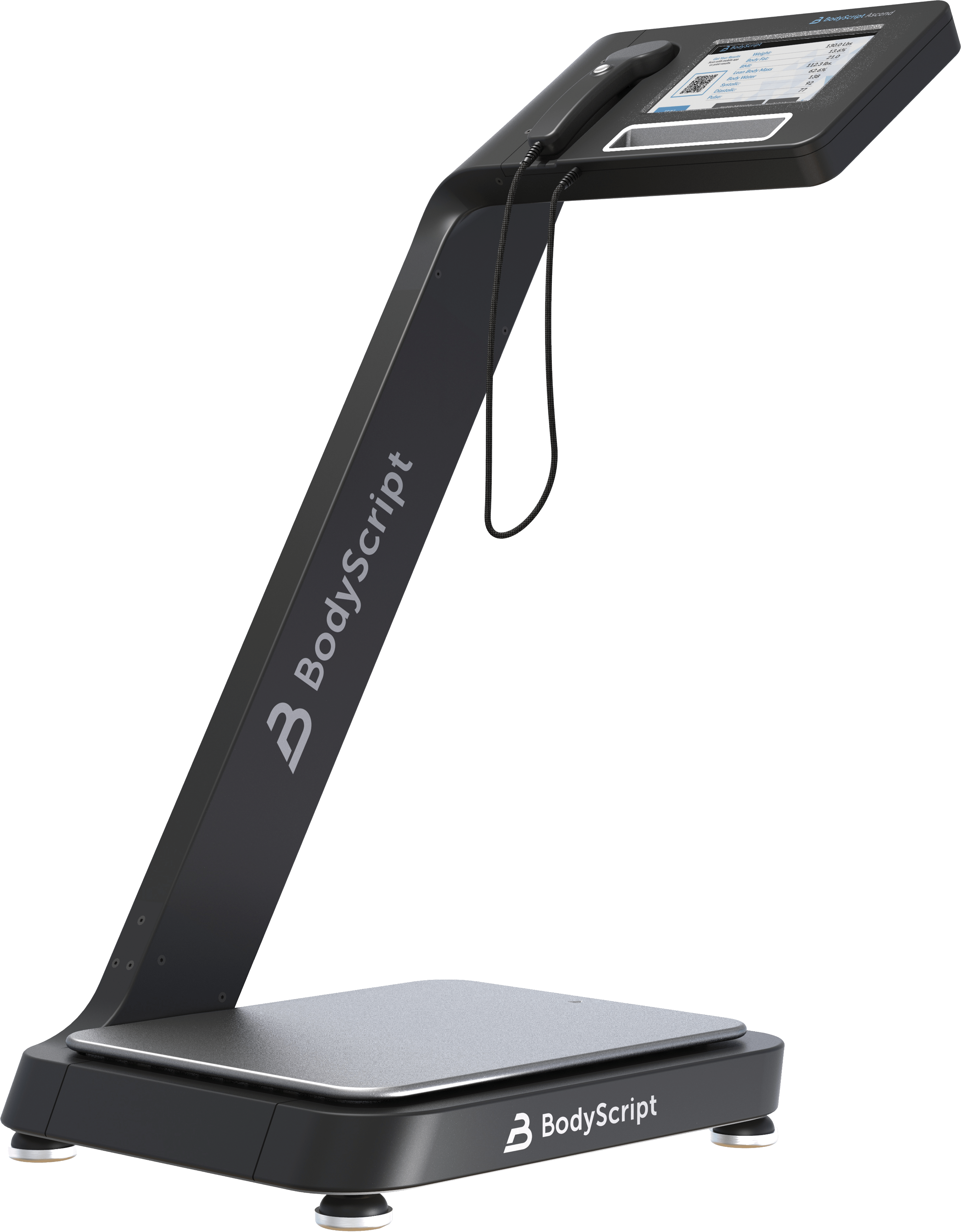Academic Study
University of Nevada Reno
In 2018, a comprehensive academic study of 437 participants was conducted at the University of Nevada Reno where multiple body composition analyzers were compared to DEXA, one of the two gold standards for body composition (alongside hydrostatic weighing). Participants were college students with a mean age of 19.2±0.6 years. The analysis protocol used for determining correlation to DEXA was as follows:
- Relative agreement was examined using intraclass correlation coefficients.
- Group level agreement was examined using equivalence testing.
- Individual-level agreement was assessed using Mean Absolute Percent Error and Bland-Altman Plots.
- Single measure intraclass correlation coefficient scores ranged from 0.71–0.80
Among the devices tested was the near-infrared (NIR) sensor technology used in the patented BodyScript Body Composition Analyzer. The results of this 437 participant study shows that there is a high degree of correlation between the baseline used in the study (DEXA) and the NIR sensor technology used in the BodyScript Body Composition Analyzer. Below are correlation charts comparing DEXA against three of the body composition methods performed in this study (hydrostatic weighing, NIR, and bio-impedance).
Summary of Results:
The correlation data shows that the NIR sensor technology results (i.e. BodyScript) were more closely correlated to DEXA than both hydrostatic weighing and bio-impedance.
The correlation results were as follows:
- NIR (i.e. BodyScript): .811
- Hydrostatic Weighing: .806
- Bio-Impedance: .711
In addition to the correlation results, the NIR sensor technology is not limited to pre-test restrictions such as food intake, hydration levels, electrolyte levels, caffeine intake, and exercise. The other test methods such as hydrostatic weighing and bio-impedance require strict adherence to both pre-test protocols and test administration protocols which allow for a high degree of variability in results further proving that the NIR technology is a robust method for body composition analysis.





